Running successful email campaigns without an autoresponder is virtually impossible. These tools automatically send the right message at the right moment—welcome notes, follow-ups, reminders, and more—so you save time, boost engagement, and move subscribers toward a clear outcome.
Done well, autoresponders let you segment contacts by behavior, purchase history, and interests—and personalize content at scale. It all starts with choosing email automation software that aligns with your goals, list size, budget, and stack.
Top 4 Best Email Autoresponders in 2025
After hands-on testing and research, these are the standouts for 2025. Each excels in automation depth, deliverability, and usability.
- Constant Contact – Best Overall
- GetResponse – Best for Sales
- ConvertKit – Best for Visual Automations
- Brevo (formerly Sendinblue) – Best All-in-One Email Automation
Below you’ll find key features, ideal use cases, current pricing notes, and drawbacks for each—plus practical tips to get value fast.
Constant Contact — Best Overall Email Autoresponder
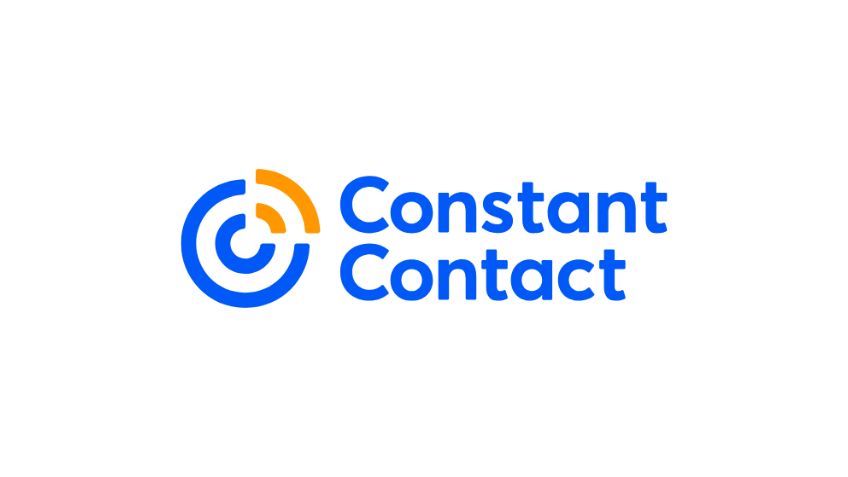
Constant Contact keeps automation simple without sacrificing capability. You can launch welcome series, abandoned-cart reminders, date-based emails (birthdays/anniversaries), drip campaigns, and re-engagement flows in minutes—no coding needed.
Templates are plentiful and mobile-optimized, and the drag-and-drop editor is beginner-friendly. If you prefer control, you can build custom sequences with behavior-based triggers and dynamic content, tailoring each message by location, role, or other subscriber attributes.
Automation highlights include trigger-on-click, page-visit, and purchase-based emails; resend-to-non-openers; and robust list growth tools. You also get deliverability guidance and built-in A/B testing for subject lines on supported plans.
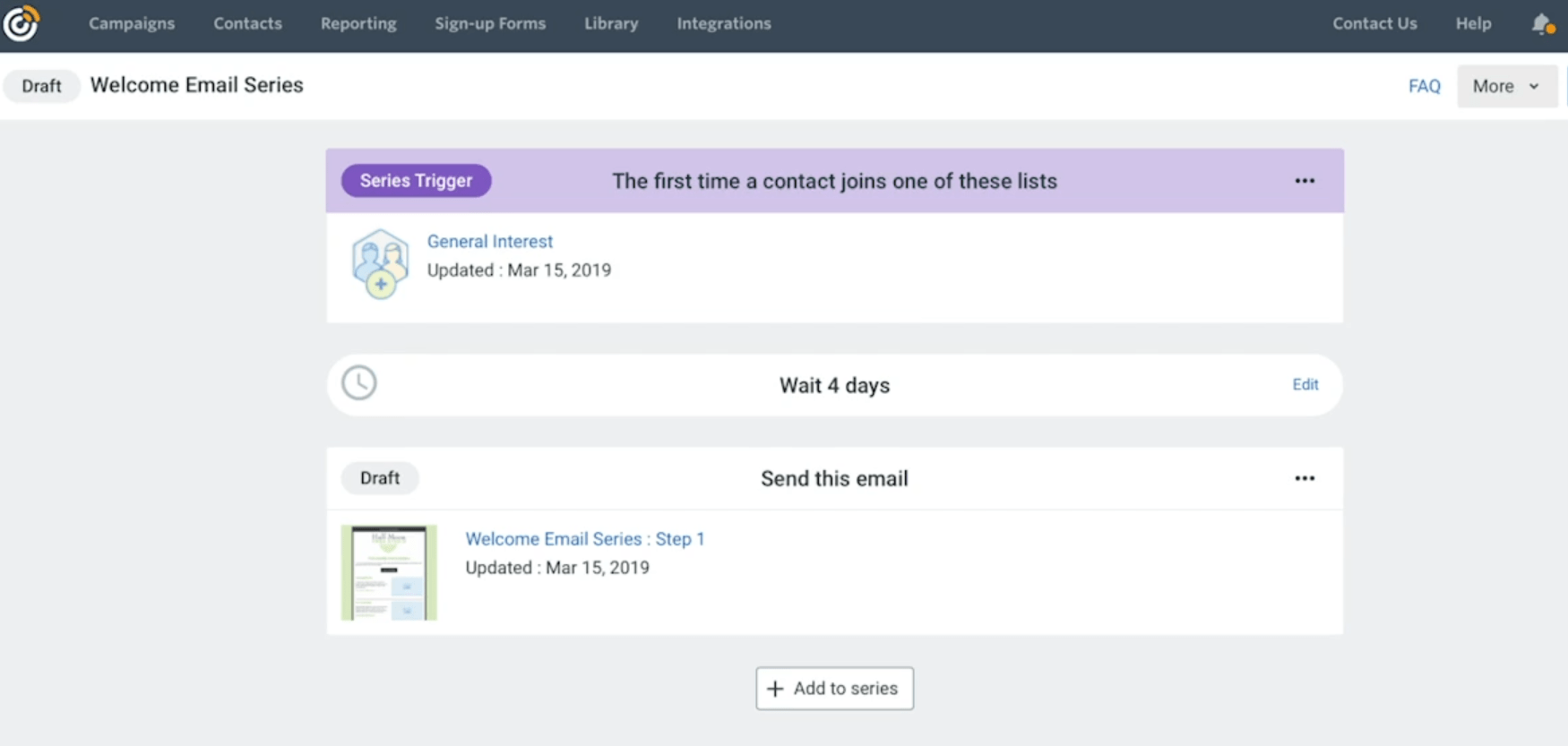
Pricing starts at $12/month (Lite) and $35/month (Standard) for up to 500 contacts, with Premium from $80/month. Email send limits scale with your list size, and SMS can be added (Premium includes 500 SMS messages in the U.S.; add-ons available for Lite/Standard). A trial is available and there’s a 30-day money-back guarantee. As your list grows beyond 50,000, you can request custom pricing.
Best for: small to midsize teams that want fast setup, dependable deliverability, and all-in-one tools (email, basic ecommerce/event tools, social posting, SMS add-on) without a steep learning curve.
Potential drawbacks: advanced automation branching and deep multichannel flows are more limited than specialist automation platforms; inbox preview is an add-on.
GetResponse — Best for Sales
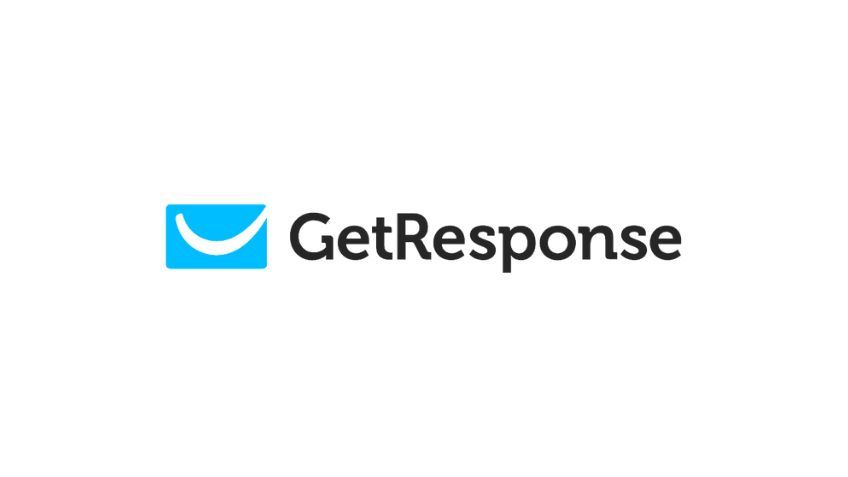
GetResponse is built for sales-driven teams. Capture leads with built-in landing pages and webinars, then nurture them with visual workflows, lead scoring, and ecommerce triggers (browse, cart, and purchase). Sales tools like product recommendations and transactional journeys help close the loop.
Autoresponder features include unlimited daily emails, granular timing controls, lifecycle and win-back templates, weekday scheduling, and a drag-and-drop editor. Integrations cover WordPress, Shopify, WooCommerce, Etsy, Salesforce, Stripe/PayPal, and more.
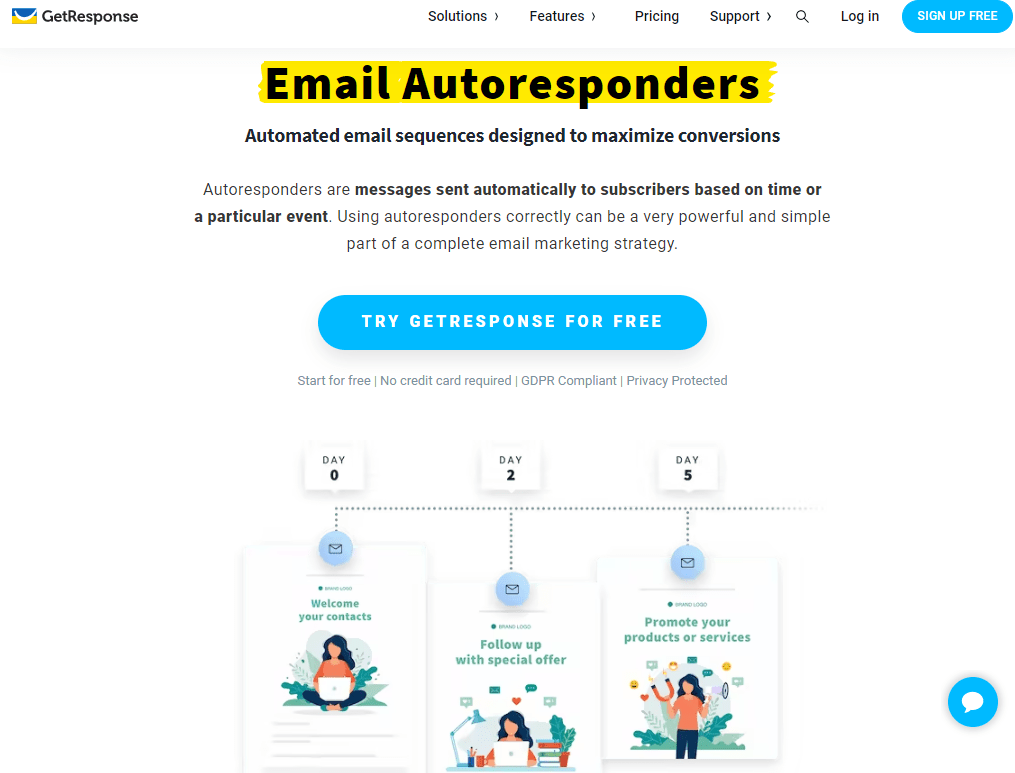
Pricing: paid plans start at $19/month for up to 1,000 subscribers and scale by list size. A free plan exists (good for testing list growth), and there’s a 30-day premium trial; note that advanced automation requires a paid tier. Annual billing discounts are available.
Best for: marketers who need full-funnel tools (email + landing pages + webinars) tied to ecommerce and CRM data.
Potential drawbacks: pricing climbs as lists and features expand; the breadth of tools can feel heavy if you only need simple sequences.
ConvertKit — Best for Visual Automations

ConvertKit (now known as Kit) is creator-centric: newsletters, digital products, paid recommendations, and sponsorship tools are built in. Its visual automation builder remains one of the most intuitive ways to map subscriber journeys without touching code.
Even complex funnels feel approachable—use tags, events, conditions, and split paths to personalize sequences, then monetize with built-in commerce and partner tools. The editor is fast, clean, and built for writing.
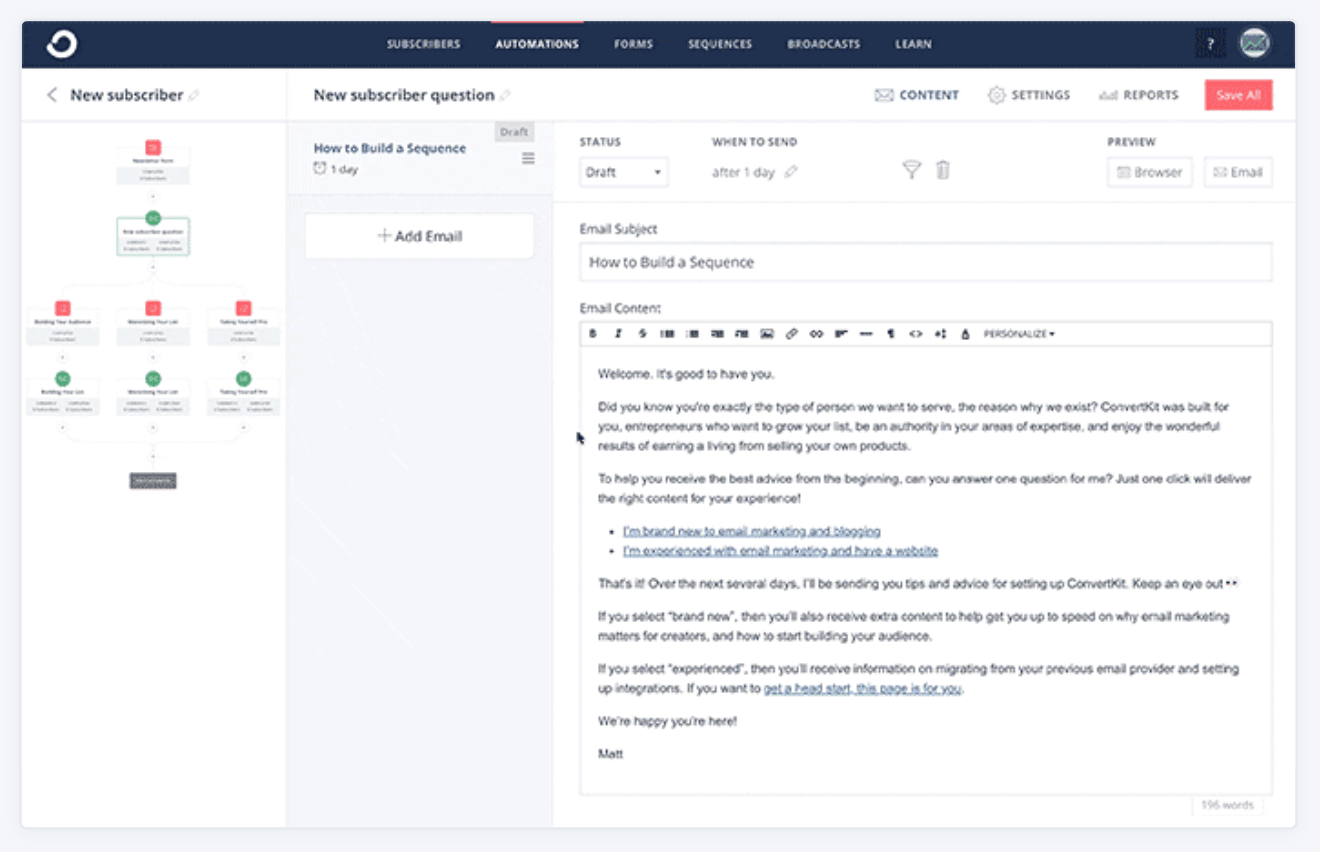
Pricing: a generous free plan supports up to 10,000 subscribers with core email, forms, landing pages, and basic automation. Paid plans start at $29/month (billed monthly) for up to 1,000 subscribers and unlock unlimited visual automations, sequences, advanced integrations, and branding removal. A 14-day trial is available.
Best for: solo creators, authors, coaches, and media operators who need powerful yet approachable automation and built-in monetization.
Potential drawbacks: advanced analytics and deep multi-brand user permissions are more limited than enterprise-oriented tools.
Brevo (formerly Sendinblue) — Best All-in-One Email Automation
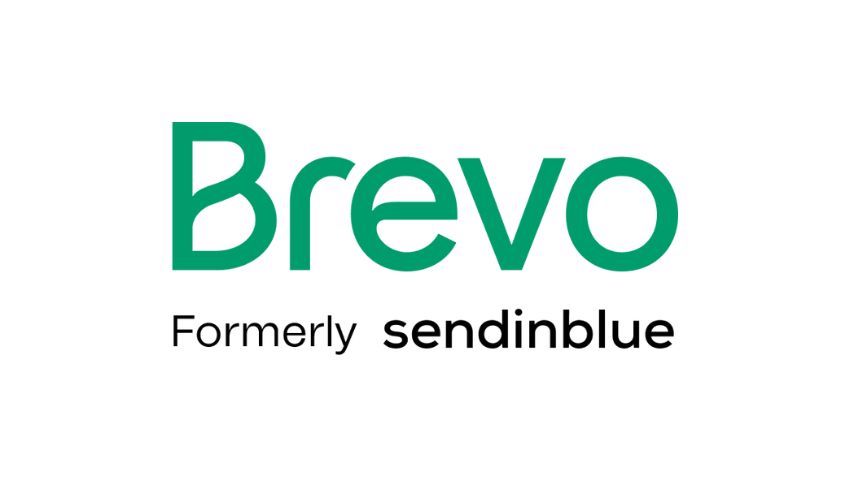
Brevo is a budget-friendly, omnichannel platform. Beyond email, you get SMS and WhatsApp campaigns, a transactional email API, web push, live chat, and a lightweight CRM—plus a visual workflow editor for behavioral automation (opens, clicks, page visits, product views, cart events, and more).
Common autoresponders—welcome, reminders, abandoned-cart, post-purchase, win-back, birthday—are easy to launch. Business plans add landing pages and multi-user access; enterprise options unlock advanced integrations and support.

Pricing: Free plan includes unlimited contacts and up to 300 emails/day. Starter and Business plans scale by monthly email volume (starting from 5,000 emails/month). You can add features like dedicated IPs and remove branding as needed.
Best for: teams that need multichannel automation and transactional messaging without enterprise-level costs.
Potential drawbacks: phone support and some advanced analytics live on higher tiers or as add-ons; configuration can take longer if you’re enabling multiple channels at once.
How to Choose the Best Email Autoresponder for You
The “best” tool depends on your goals, list size, growth plans, and how much automation you actually need. Use the checklist below to narrow it down.
List Management and Segmentation Features
Accurate targeting drives conversions. Look for tagging, custom fields, saved segments, and behavior-based rules (clicked X, viewed Y, purchased Z). Your platform should update segments automatically based on actions to keep campaigns relevant without manual work.
Bonus points for predictive or rule-based dynamic content that swaps offers or blocks per subscriber profile (location, role, lifecycle stage).
Lead Generation Tools
You’ll grow faster if list-building is baked in. Prioritize platforms with landing pages, pop-ups, embedded forms, and hosted lead magnets. If you sell online, make sure your autoresponder connects to checkout and can trigger on product/category, cart, and order events.
Helpful extras: UTM auto-tagging, referral/recommendation tools, and native integrations with your CMS, ecommerce platform, and payment providers.
Sending Limits
Some providers cap monthly sends or tie sends to list size (e.g., 10–24x your contacts). Map your sequences (welcome series, onboarding, win-backs, promos) and ensure your plan has headroom. If you send frequently, consider unlimited-send tiers or volume-based pricing.
For launch spikes or seasonal peaks, ask about temporary upgrades or pay-as-you-go credits to avoid throttling.
Subscriber List Size
Pick a provider that fits now and later. Some tools excel for creators up to ~10k; others scale cleanly past 100k with multi-brand permissions, SSO, and dedicated IPs. Confirm migration support, because switching platforms mid-growth is costly.
Deliverability & Compliance
High deliverability requires more than templates. Ensure DMARC, SPF, and DKIM are easy to set up, custom tracking domains are supported, and the platform enforces list hygiene (bounce handling, engagement-based suppression). Ask for guidance on IP warming if you’re sending at scale.
Automation Depth & Triggers
Look for visual builders, branching logic, goal nodes, delay/wait steps, and event triggers across channels (email, SMS, web push, transactional). Prebuilt recipes—welcome, onboarding, cart, post-purchase, churn risk—help you launch fast and iterate later.
Templates, Editor, and AI
Modern editors should handle sections, saved blocks, and mobile-first layouts. Useful AI features include subject-line ideas, copy assistance, and send-time optimization. Always A/B test subject lines and first-screen content; then lock in winners as reusable templates.
Reporting & Attribution
Beyond opens and clicks, prioritize revenue attribution, cohort tracking, path analysis, and UTM-based reporting. If you sell online, verify native ecommerce dashboards (LTV, AOV, repeat rate) so you can tie automation to outcomes—not just engagement.
Integrations & Ecosystem
Confirm native integrations for your stack—WordPress, Shopify/WooCommerce, Stripe/PayPal, CRM, webinar software. Check for webhooks and an open API if you plan to sync custom events or build internal tools.
Pricing & Scalability
Compare total cost at your future list size, not just today’s. Factor in add-ons (SMS, dedicated IP, inbox previews), multi-user access, and branding removal. Annual plans can cut costs 10–30%, but confirm upgrade flexibility as you grow.
Best Email Autoresponder in 2025
For most users, Constant Contact is the best overall pick in 2025 thanks to its balance of ease-of-use, deliverability, and automation power at a fair starting price. If your priorities are sales funnels and webinars, go with GetResponse. If you’re a creator who wants beautiful visual automations and built-in monetization, ConvertKit (Kit) shines. For multichannel messaging with a transactional API, Brevo is hard to beat.
Autoresponders are a force multiplier—great for welcome series, lead nurturing, abandoned-cart recovery, and re-engagement across channels. Map one core journey, launch it, then improve weekly: test subject lines, tighten segments, and expand flows as you learn what drives conversions.
No matter your use case, one of the tools above will fit your list size, workflow, and growth goals—and help you turn subscribers into customers consistently.
